
Oct 30, 2022
Can Tracxn's Public Dreams Bring Private Data to the World?
Profile
SaaS
IPO
B2B
Venture Capital
Last fortnight, Tracxn went public for $100M, the first Indian SaaS company to do so this year on the Indian markets
The Path Less Travelled
Abhishek Goyal and Neha Singh were both studying computer science at the IITs in the 2000s
Abhishek Goyal started his career as a Software Engineer at Amazon and became a CTO in just five years.
Drawn into the startup space, he joined a venture capital firm in 2008 to invest in startups. This was when India's Internet penetration was at its nascent stage. Cognisant of what the tech wave could unravel, Abhishek would meet two Amazon colleagues selling books.
He would champion an investment into Sachin and Binny’s company, that his firm would eventually do
Unbeknownst to their future paths crossing, Neha Singh went on to get a dual degree in computer science from IIT Bombay and an MBA from Stanford. After starting at a top-tier consulting firm, Neha eventually ended up at another venture capital firm.
She would become one of the earliest people involved in the Indian investment space in the 2010s when few even knew what a startup was
Taking very different paths into venture capital would result in both of them finding a similar problem.
They say compelling startup ideas tend to have three things in common. They’re something the founders themselves want, that they can build and that few others realise are worth doing.
Neha and Abhishek would be another instance of bringing this idea to fruition.
At the time, the Indian startup space was much quieter, yet to be acquainted with the terms “startups”, “VC”, and “unicorn”.
VCs spent countless hours manually analysing industries by scouring the internet, personal networks or other platforms. They would be plagued by constant anxiety of missing out on an exciting startup, colloquially called FOMO or fear of missing out.
Both Neha and Abhishek acutely felt this
Forced to spend efforts on discovering companies, they didn’t get the time they deserved to dedicate to the startup they found. Diligencing existing data they could dig deep into, analysing markets and upcoming opportunities was what would get left behind.
An idea of a startup trying to make sense of startups for investors was brewing.
Sitting On A Goldmine
This was not a problem only bothering Indian investors
Developed startup markets like Silicon Valley had no data analysis platform that solved for private markets.
In 2010, the only financial data platforms available were targeting the public sector.
While the public sector had close to 50,000 companies globally, the functioning private sector was in a few million. With no solution in sight and scale to be captured, private sector data analysis was a space waiting to be disrupted.
Being true technologists, Abhishek and Neha each had their own self-made data analysis platform at their own VC firms
Crossing paths in 2012, they decided to build their rudimentary platforms into a full-fledged startup that bridges the foundational information gap.
Tracxn was born.
Identifying the US as the right market with customers, corporates and VCs, they decided to go with it as their primary market.
They realised that building a company that could stand the course of time was not enough just to make excellent tech.
They had to balance the tech with actionable and insightful data.
Deciding to focus on sector-focused analysis and build data operations, they started hiring and setting up shop in India, which was fast becoming the world's back office.
With a well-thought-out product with no alternative in the market, Tracxn went in full swing.
Reaching out to connections in 2013, they sold their product at full price to VCs in India and US.
Charging for a new product was the perfect opportunity for them to test out the validity of their solution.
Opening to complete customer satisfaction and willingness to pay, Tracxn had caught onto a growing trend.
The startup ecosystem was beginning to take off, but it wouldn’t be easy to build.
Engineering The Right Shovel
Launching a completely new vertical SaaS product for an entire industry was no simple task.
Not compromising on pricing helped them focus on building a comprehensive solution capable of solving multiple use cases.
Starting by identifying interesting startups in 2014/15’s hot themes like cybersecurity, e-commerce and SaaS, Tracxn established itself as a value proposition that VCs, private equity investors and corporates loved.
With early success in full swing, it was time for Tracxn to push the pedal.
In 2015, they raised $3.5 M first round. With new markets to capture and new use cases to unlock, Tracxn increased its team from 30 to 150.
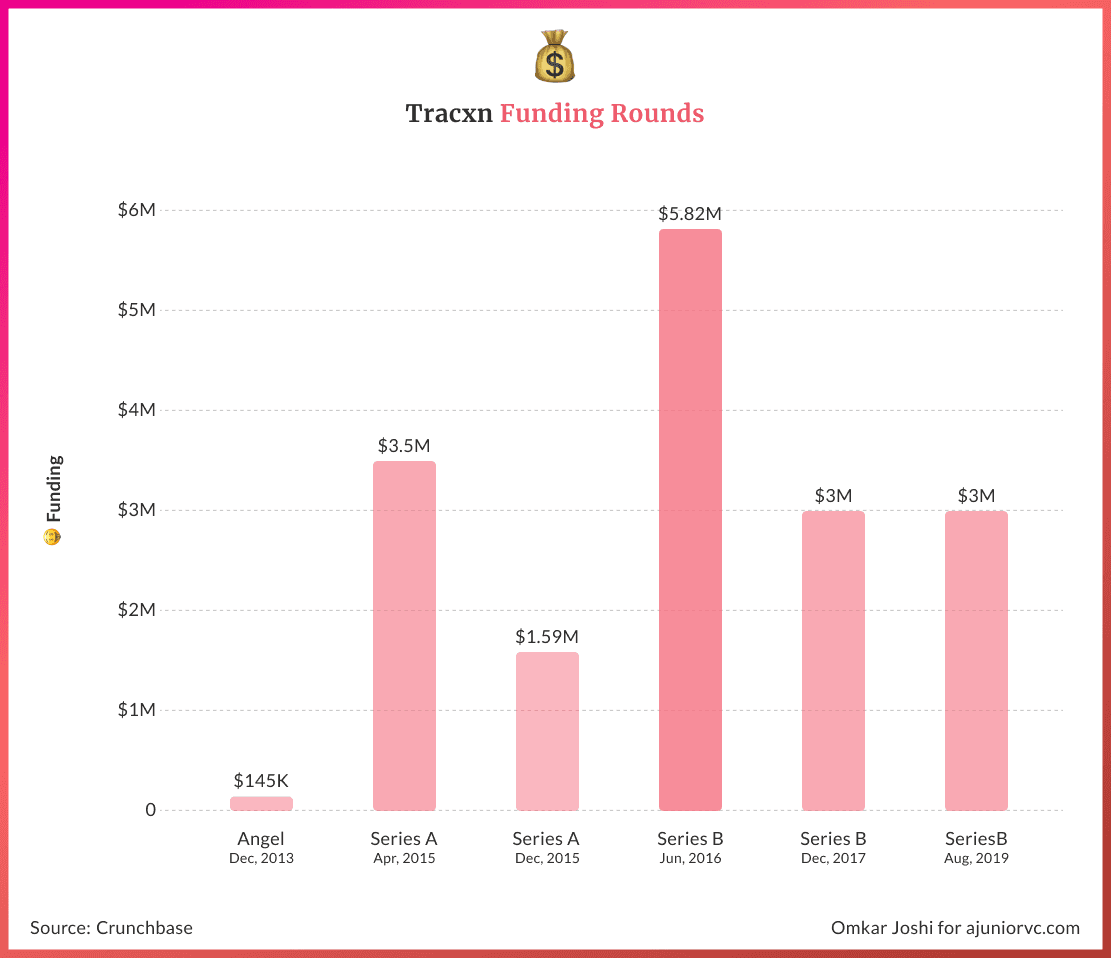
In just one year, their monitored startup database also increased from 10M to 20M.
By 2016, Tracxn was not just solving for investors. They launched their funding platform Tracxn Syndicate.
Building on top of the company’s curated database of Indian startups, Tracxn Syndicate handpicked 1-2 startups and presented them to the network of angels and investors.
With intelligent analysis and interested investors onboarded, Tracxn Syndicate claimed to close the fundraising process in just three days. This was a massive saving for both startups and investors.
Use cases like these indicated the start of an explosion in the entrepreneurial ecosystem. Tracxn was giving visibility into the private markets that hadn’t existed before.
But the pioneer of data and insight into public markets had existed for decades
Buyers Aware
In investing, information is everything
Investors require high-quality data to make business decisions because these are significant financial investments.
Bloomberg rightly identified the problem in the late 1970s, when public markets were only getting started. When the Bloomberg Terminal was launched in 1981, the total value of all listed firms worldwide was a few trillion dollars.
The Bloomberg Terminal increased transparency in the financial world. It linked market participants to a data, analytics, and information-delivery service – and transformed an industry.
As the saying goes, history repeats itself. This time though, private markets investors were in for a pleasant surprise.
According to estimates, there were over 150 million private enterprises globally in 2016.
Private enterprises were exhibiting consistent signals of expansion. With globalisation and favourable business environments worldwide, private companies were projected to strive for even more growth.
The growing private market was becoming increasingly relevant, with AUM in the private market standing at over $5T in 2016 and predicted to reach $10T in 2025.
It would not be tiny compared to the public sector, which had a total market value of around $80T.
While the AUM was high, the take rate for a SaaS player like Tracxn would be determined by the number of investment professionals.
Assuming that an investor manages $5-10M of AUM, the total universe of private market investors is ~500K. Tracxn’s pricing of ~$5K/year pegged the overall market at ~$3Bn.
It was betting on this growing 2-3x over the next decade.
Platforms like Bloomberg catering to public markets have generated billions of dollars in revenue by supplying data to investors. Bloomberg, especially, was a high-cash-generating machine.
It was now time for private markets.
As the private market expanded in size, so does the infrastructure or the complete ecosystem of that market, and eventually, decisions must be made based on data.
Tracxn focused on the same.
Tracxn specialises in providing private corporate data to customers for deal sourcing, identifying M&A prospects, deal vetting, analysis, and tracking emerging patterns across industries and marketplaces.
Tracxn’s traction continued, and it raised another round. Unlike other startups yet to discover a business model, Tracxn was making money.
By 2017, it was clear that the investments in data and technology would pay off.
Unlike companies like Flipkart, which Abhishek had found, Tracxn was not going to be a fast-scaling, explosive growth, high-burn machine.
It would be the patiently executing machine.
Lean Mean Mining Machine
By 2018, the patient SaaS business model that Tracxn employed was truly built in India for the world.
Tracxn required significant investment in both product and human capital to start. However, once a reasonable scale was achieved, efficiency kicked in. Profitability was attained much more quickly.
This is an example of a traditional operating leverage business model. Furthermore, the decision to operate from India helped achieve the scale faster and was motivated by two primary reasons.
The first reason was the average remuneration in countries like India is almost ten times lower than that in the USA and around six times lower than in the UK. This has been one of the key advantages for Tracxn, which operates primarily out of India and serves globally.
The second reason was the market size; the global public market's global valuation was about $90T. India’s public market valuation was about $3T, which was just 3% of the total market value
In private markets, India’s share was higher, around 5%, but not significant for a company like Tracxn to dedicate all resources to one geography.
Tracxn made a deliberate decision to serve worldwide clients from India. These would largely be based in the US.
The cost also painted a similar picture. As scale kicked in, a SaaS player like Tracxn could service many more customers with a marginal increase in employment costs.
Apart from the cost advantage, Tracxn also relied on a tiered pricing approach.
Its “small team” offering allowed even smaller shops to consider tapping into their database without worrying about finding too deep a hole in their pockets.
Tracxn's customer base rose by 400% in 2019.
It had clients including BMW, LG, Qihoo, VMWare, Target, Vodafone, and Bosch, global venture capital, and private equity firms.
Tracxn was now in a position where adding one customer did not come at an additional cost. By then, Tracxn was also discovering the right way to acquire its customers.
Upping The Ante
Tracxn discovered that the conventional carpet-bombing approach to client acquisition might not work
In SaaS, sales were vital. But this was sold to investors who didn’t have time on bandwidth, ironically the reason Tracxn existed. They needed to figure out another model to get to these customers.
Tracxn began to rely on content marketing to reach out to prospective and existing consumers mainly through online channels such as emails, social media, and search engine optimisation.
Its vast database would help generate valuable content to close customers.
Over some time, content marketing included making sample data on companies, providing content for articles and sharing industry newsletters and sector and geography-focused reports.
The icing was that the internally generated and published content helped improve the SEO ranking.
But that was not it
Tracxn utilised its research capability well and demonstrated that by publishing and providing data to leading media outlets in India and globally to use their data and quotes as sources in their articles and news reports.
This activity aided Tracxn in gaining a customer's trust.
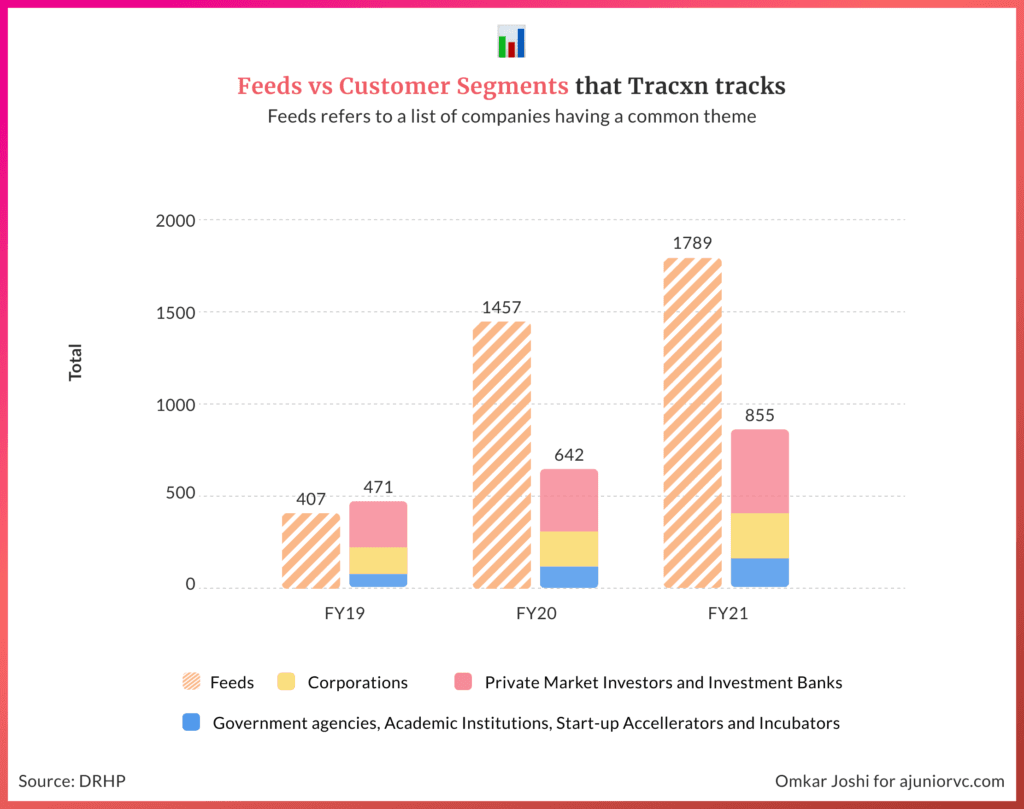
In the process, Tracxn processed over 1.3 million, with a growth of over 100% in two years between 2019 and 2021.
The data points also increased by more than 400% during the same period. The stage was set for Tracxn to go big, and the founders were now envisioning the IPO.
But going public in a competitive market was not going to be easy.
The Pacemaker
Ever since Tracxn started to build a data platform, they knew that they were up against the global and not local competition.
Data transcends borders, and offering a globally competitive proposition was always challenging.
With this in mind, Abhishek and Neha focused on getting the product right and raising reasonably.
They used the initial investment to build the platform and a team focused on tech, product, analysis and data operations.
This helped Tracxn build an extensive database of private companies across geographies, sectors and stages of business.
By June 2022, they profiled more than 1.8M entities and categorised them globally across geographies, industries, sectors, and networks.
All this data service also comes with platform tools like deal flow management, dashboards, APIs, plug-ins, trackers and statistical models.
But with all these products came competition. Tracxn opened itself to challengers from multiple sources with vast services across industries.
Competition could range from publicly available information on company websites, online databases and government records to formal private company data providers such as Crunchbase, CBInsights, Pitchbook and PrviCo.
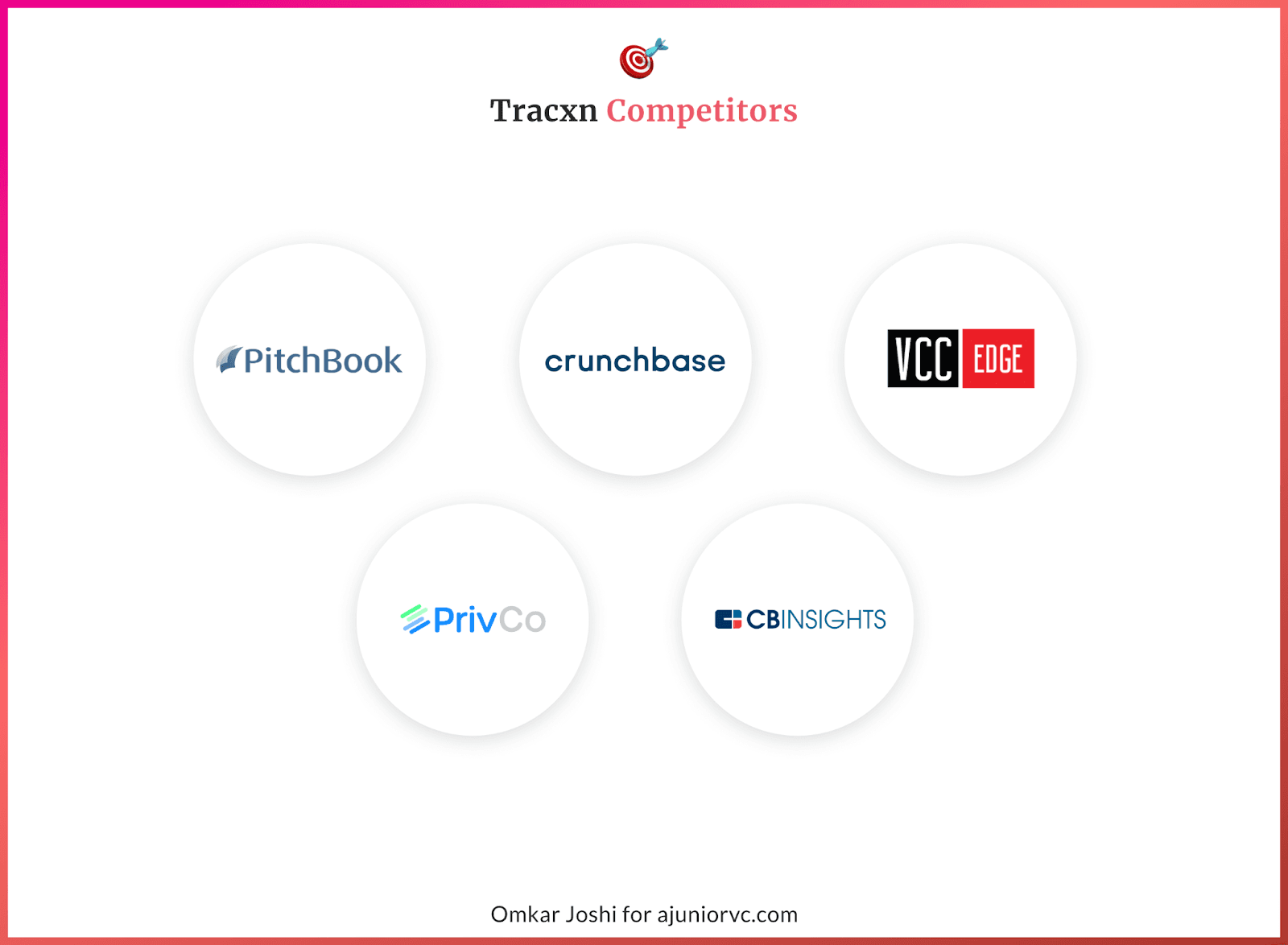
While Crunchbase, CBInsights and PrviCo databases contained between 0.5 - 0.8 million private companies, Pitchbook included 3.4 million.
In addition to more diverse service offerings, larger competitors could benefit from relationships with customers based on other products, building services together or selling at very low margins.
Moreover, larger global companies could enjoy access to higher marketing and sales budgets to access new clients.
The competitive landscape could change fast with changing industry trends, technology and customer needs.
Switching costs for customers could be low given similar use cases, the easy use of platforms and integrated APIs and databases.
While competitive factors would be expanding the client base could involve the breadth of platform offerings, cost and ease of use, customer retention can come from the quality and accuracy of data, data privacy and security and actual return on investment for customers.
Despite the competition, Tracxn would keep chugging along. Public dreams to make private data accessible were getting closer.
As the second half of 2022 began, Tracxn was ready
And Now The Rainmaker
Tracxn shares were listed on the National Stock Exchange (NSE) on October 20, 2022, at Rs. 84.5, a 5.63% premium over its price.
This was an Offer for sale, with existing shareholders diluting their stake through the primary market issue.
The company commands a rupee valuation of about Rs. 802 crore post IPO, at about 12 times trailing 12-month sales.
For SaaS companies, this is not a high multiple. In the craziness of 2021, this could be as high as 20-30x.
The Tracxn IPO comes amidst an overall lull in the current year and against other prominent startup listings (Paytm, Zomato, Nykaa), resulting in a decline in shareholder wealth over the past year.
The listing was deemed steady, with the potential to spur more startups to materialise their IPO plans in the coming months.
For Abhishek Goyal and Neha Sigh, the seeds of listing on the exchanges were sown sometime in December 2021 when they turned cash flow positive. Their ambitions were further fortified by achieving a positive bottom line in June last year.
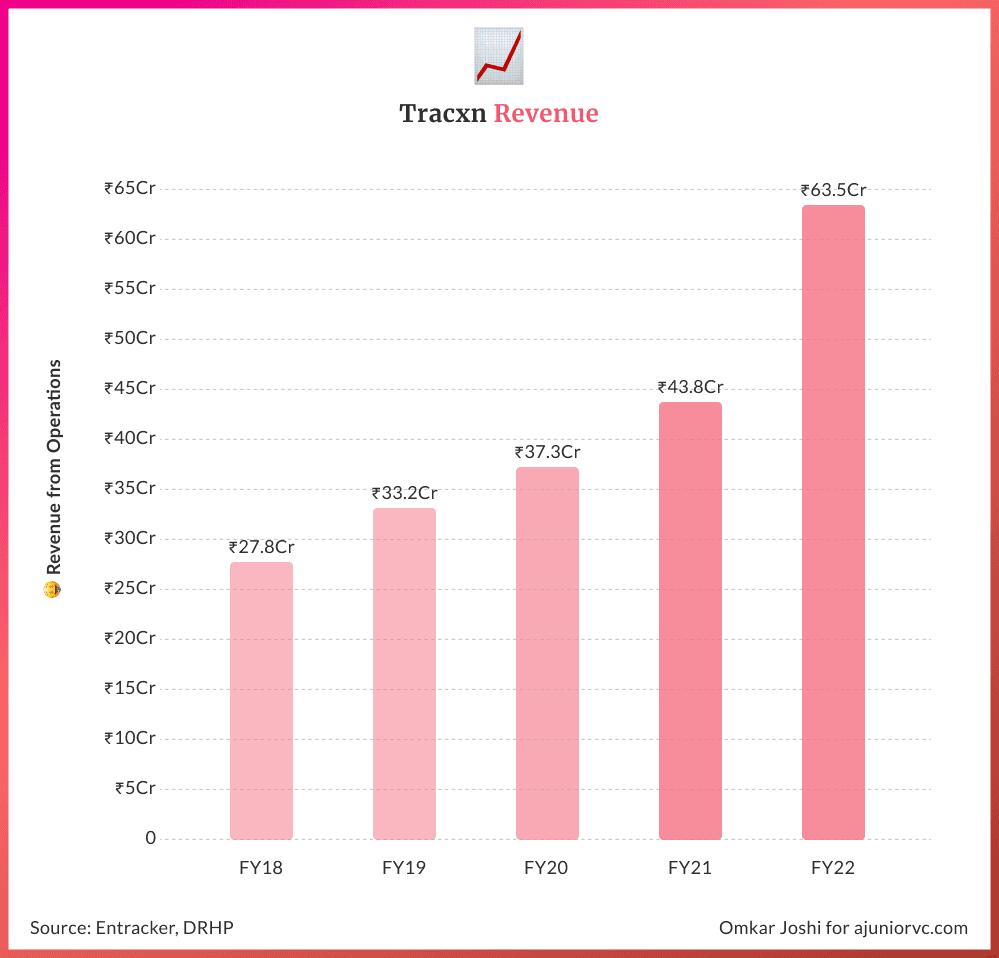
Indian investors treat profitable businesses well, so the expanding EBITDA and positive cash flows made life easier during the investor roadshows and helped garner investor credibility.
Against the backdrop of fast-burn, fast-growth startups, Tracxn was profitable and
The retailer investor pitch was primarily the expansion of private valuations. Compared to worldwide public market valuations that are close to $90 trillion, private markets stood at $9 trillion in 2022.
The growth of private markets will eventually expand the underlying ecosystem and infrastructure. Given that investors rely on high-quality data to make significant financial decisions, reliable data platforms become an essential component of the infrastructure.
With the IPO euphoria, successful investor exit and heightened scrutiny, nothing much changes for Abhishek and Neha with their daily lives and work. They continue to do what they do, only with more discipline and stability.
Decision-making, however, takes on a more long-term horizon. Instead of beefing up valuations to sell, they focus on building an iconic data company for the next 30 years.
Tracxn’s solid customer base and global presence include Fortune 500 companies.
They boast a diverse base of 1139 customer accounts across 58 countries currently. This is a growth of 30.4% CAGR since 2020.
Private market investors and investment banks make up more than half of the customer accounts, with the rest coming from corporations, government agencies, academic institutions and incubators.
Tracxn’s customer base also has the dual advantage of geographical spread - across the Americas, Europe and Asia - and high customer retention of close to 74%.
This must instil investor confidence in the company’s ability to attract and retain customers through a valuable and scalable data platform.
While revenue has seen a linear growth trajectory over the last three years, 70% of revenue comes from Europe and the US. This could expose the company to macro headwinds, currency fluctuations, and stiff competition in these markets.
However, with India constituting 10% of global unicorns and expanding, it will be a major part of future expansion. Tracxn will continue to add Indian private market investors to its base.
For Tracxn, the post-IPO plan could focus on inorganic acquisition to facilitate quick adoption of technology across markets and improve its footprint across more industries.
Armed with an enterprise-grade product, the founders also plan on ramping up the sales function and aim to capture market share.
In addition to battling the competition, this could improve the topline at a rate faster than the costs.
For Private Markets, From The Public Side
Tracxn’s big bet is that the demand for private data will blow up.
Private market investors rely heavily on company research before pouring in millions of dollars of investment. The availability and authenticity of their data are vital to making sound investment decisions.
Assets under management (AUM) in the private markets increased from $3.4 trillion to $10.2 trillion in the last 7 years. The number of investment banks and private equity firms grew by about 10 per cent during the same period.
This translates into a huge increase in the data volume and its potential users. Tracxn is well poised to benefit from this trend.
The users of private market data could include investment banks, private equity (PE) and venture capital firms, among other smaller players in the investor community. Data points on the number of funding rounds, commercial value, human resource quality and technological adoption are important factors in evaluating companies.
Moreover, PE firms continue to monitor their target sectors for financial growth and changing market dynamics yearly. Sound private company data helps to gather intelligence efficiently and expedite decision-making.
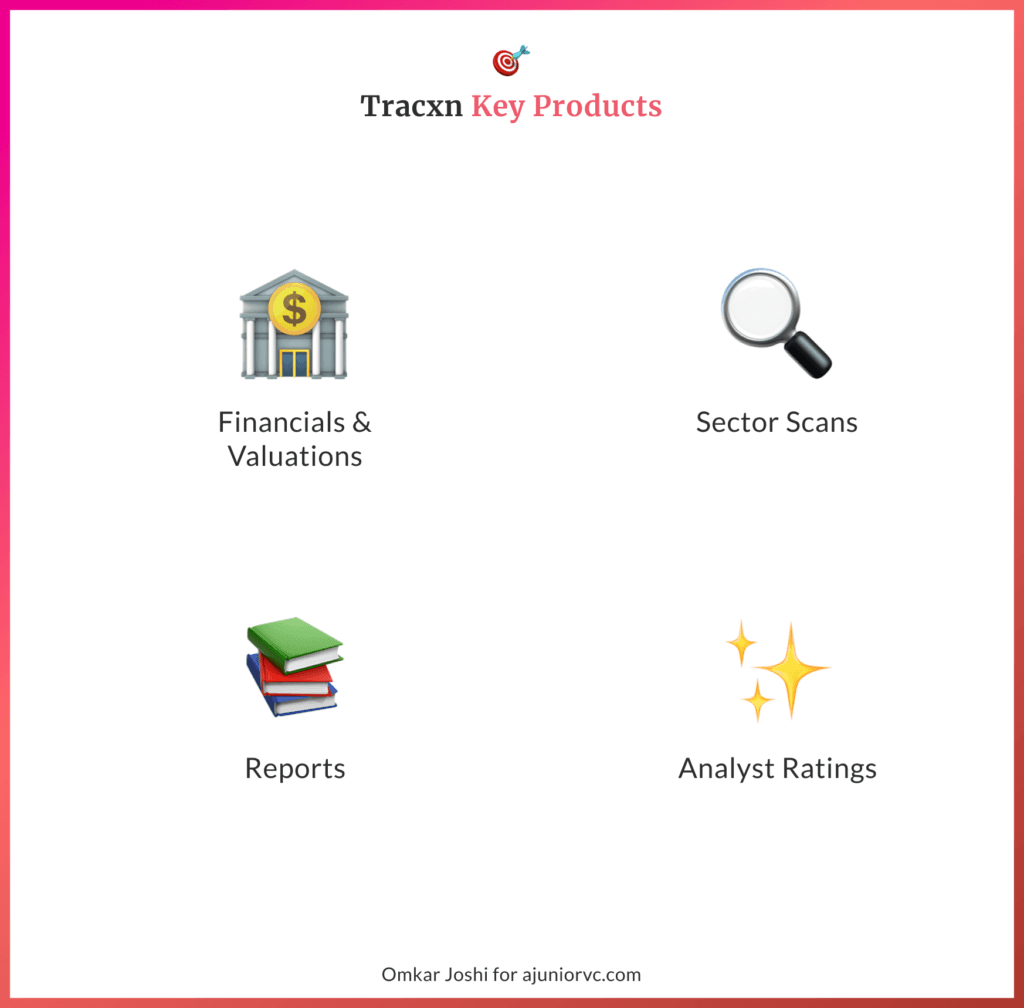
Reports and insights shared by Tracxn replace the primitive methods of in-house research teams who track individual companies and populate excel sheets with data points.
Not only is this method time-consuming and inefficient, but it also lacks depth and insight. Investment firms have moved on from data collation to data analytics.
With advanced technology to capture and process data, information providers like Tracxn spend more time synthesising the data. They provide in-depth, visual and readily available insights on a platter (platform).
Faster and more efficient decision-making leads to a better return on investment, increases the bar for companies and thus incentivises more investment and more players in the market.
With time, readily available company insights become indispensable to the private markets, fueling continued growth.
Like oil, data in its raw, unrefined form is practically useless.
However, data that is ‘refined’ through analysis and visualisation can form a combustible mixture to power some rocket ships.
Tracxn could use the private market hook as a wedge to get into data for larger companies. You can already see it populating data on all kinds of companies.
It is not crazy to think that Tracxn could use this as a Trojan horse to get into public market data. The market is significant. Data is a moat. With the private market journey of companies tracked,
Tracxn had caught them young. Like a customer growing with you, Tracxn’s data points would grow with its startups.
Tracxn might be becoming a supplier of potent fuel in the market.
Writing: Bhoomika, Parth, Rajiv, Sahil and Aviral Design: Omkar and Blair